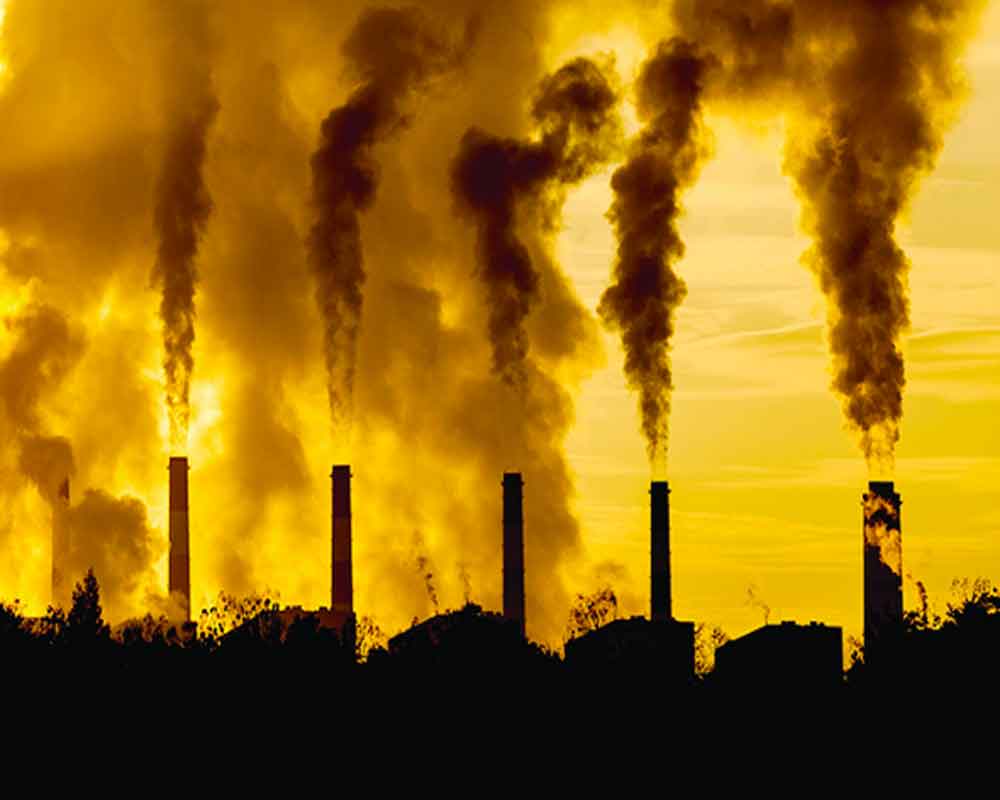For reaping benefits from airshed management, the Government must fast-track the compilation of emission source data at all levels supported by adequate funding
Intensive multi-pronged strategies to fight pollution have come to a nought as is evident by worsening environmental conditions and climate change. Currently, 60 per cent of Indian cities have air that is over seven times more polluted than the permissible limits and is routinely ranked among the world’s worst when it comes to air pollution. According to the 2023 World Air Quality Report by IQAir, 39 out of 50 of the world’s most polluted cities are present in India, with high 2.5 particulate matter (PM) levels. Worse still, According to the Air Quality Life Index Indians, on average, lose 5.3 years of their life, because of air pollution.
Given these conditions, a broad initiative that can address air pollution in large geographical areas is the urgent need of the hour. Airshed management is one such concept that has the potential to resolve the pollution crisis on a large scale by addressing the issue on a regional rather than local basis. Airshed is defined as a common geographic area where pollutants get trapped, creating similar air quality for all. A report by the University of Surrey in association with the Delhi Pollution Control Committee (DPCC), CSIR-NEERI underlined the importance of Airshed management in tackling pollution.
Air pollution by nature is never local but transcends borders and regions. The annual problem of air pollution faced by Delhi NCR on account of crop burning by neighbouring states of Punjab & Haryana is an apt example. The University of Surrey report pointed out that specially appointed Airshed councils can help local, regional and central agencies coordinate efforts in fighting air pollution.
In order to demarcate Airsheds, India must assimilate emission quantification with the help of the network of 438 continuous air quality monitoring systems aided by the 883 manual stations set up by the Central Pollution Control Board across various cities. This will help establish an accurate multi-pollutant inventory and enable the division of cities into Airsheds of various sizes. This must be followed by analysing meteorological data to evaluate variations and similarities at the local and regional levels and finally air quality modelling must be done to understand the pollution dispersion. Once delineated in this manner, based on Airshed size, the city administrators can manage the Airshed locally and if the size is bigger interstate collaboration can be resorted to manage the Airshed effectively. Airshed management has paid rich dividends across the world. For instance, Airshed management practices in Mexico and Los Angeles combine scientific evidence with innovative governance in addition to effective coordination between various agencies to reduce vehicular and other emissions. The Airshed management in California is yet another example wherein the partnership between California Air Resources Board and the Environmental Protection Agency (EPA) helps monitor and reduce air pollution across the districts in the state.
India can emulate these examples and manage Airshed effectively in order to control pollution levels in areas where the AQI is critical such as the non-attainment cities (NACs). Cities are declared NAC if over a 5-year period, they consistently do not meet the national ambient Air Quality Standards (NAAQS) for PM 10 (Particulate matter that is10 microns or less in diameter) or N02 (Nitrogen Dioxide). India currently has 131 NACs. To tackle the air pollution in NAC, the government launched the National Clean Air Programme (NCAP) in 2019 for non-attainment cities.
The NCAP aimed to reduce PM levels by 20-30 per cent by 2024, compared to 2017 levels, but so far progress under the programme has been underwhelming – only 39 out of the 131 cities have done apportionment studies to track down sources of pollution and less than 50 per cent of the total funds allocated under the NCAP (Rs 652.61 crores) have been utilised. With the pollution source data collection on a slow track, the design of the airshed too is lagging behind. India must bolster collective motivation and incentives to promote airshed air quality management. Currently, states are designing their own action plans for air pollution management that are essentially city-level based and not at rural, district and regional levels. India is mostly collecting urban emissions data which is inadequate if effective Airshed management is to be implemented because it requires regional data. The bigger challenge however is ensuring collaboration and coordination between state governments when an Airshed constitutes multiple states. To ensure that India benefits from Airshed management, the government must fast-track the compilation of emission source data at all levels. Besides this, India must also establish effective Airshed Committees that can help in interstate and inter-departmental coordination. These committees would be the first port of call to resolve any issue of jurisdiction, regulatory overlap or any other form of dispute relating to planning or regulation relating to air quality in the region.
(The author is a policy analyst. The views are personal)


























